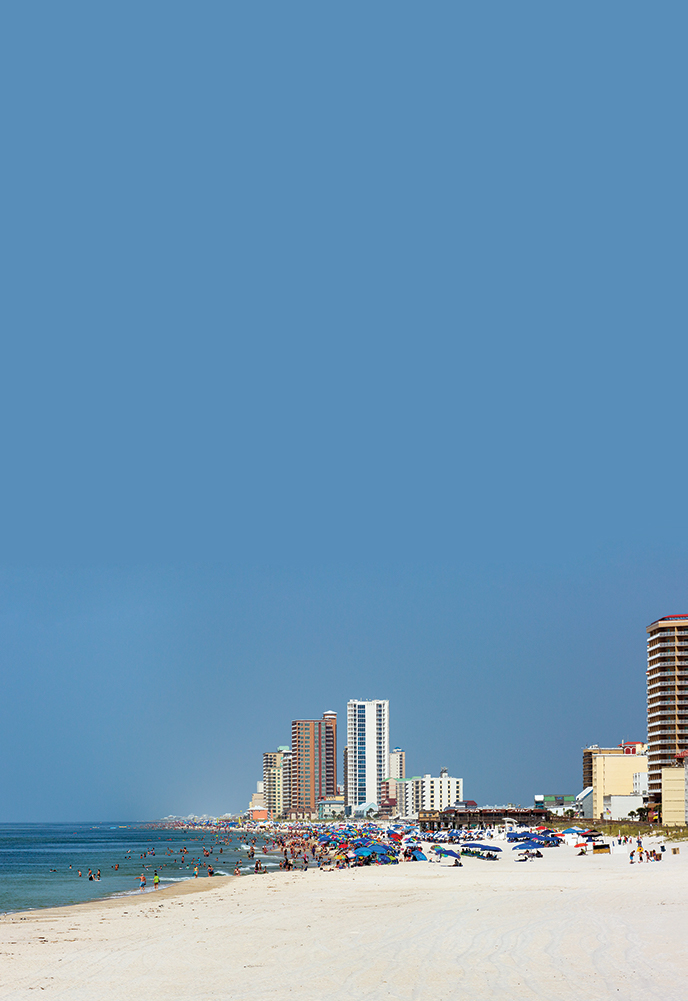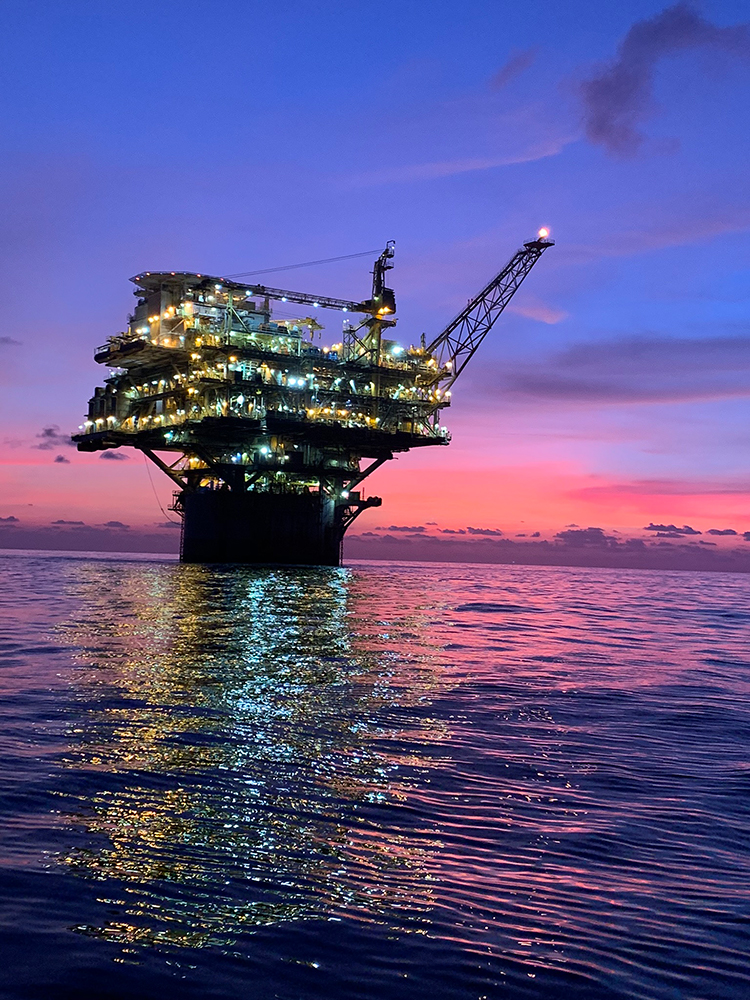By Colette Boehm

Photo by Gina Bramble
Like many who live in coastal Alabama, Phillip Hinesley has a personal connection to the Gulf of Mexico. Yes, like many, he loves to fish, but his connection goes beyond the excitement of reeling in a catch from Alabama’s gulf waters.
After living on the Gulf Coast most of his life and sustaining an 18-year career with the Alabama Department of Conservation and Natural Resources (ADCNR), Hinesley has a better appreciation than most for just how connected Alabama’s ecology, economy and culture are to these gulf waters. So this year, he is joining many throughout the Gulf Coast region to “Embrace the Gulf.”
Hinesley retired last year from ADCNR but these days, when he’s not enjoying a quiet morning casting a line from his family’s pier near Fort Morgan, Hinesley is still working with organizations like the Gulf of Mexico Alliance (GOMA). It’s a relationship he continues, he said, because he believes in the work.
The alliance is a regional partnership focused on sustaining and promoting the resources of the Gulf of Mexico. It’s a non-profit led by a network of federal agencies, academic groups, businesses and other non-profits from the five U.S. gulf states.

Photo by Colette Boehm
“GOMA started out as part of the U.S. Ocean Commission and we started gearing up in 2004,” he says. He is quick to point out the value of having GOMA relationships established across state lines and between agencies and industries when events like the Deepwater Horizon explosion and oil spill happened in 2010. Ten years later, he feels the effort is “more important than ever” as the alliance celebrates a year-long campaign to Embrace the Gulf.
GOMA launched the Embrace the Gulf campaign in January as an effort to showcase the importance of the Gulf of Mexico and highlight five areas of influence: resilient coastal communities, prosperous industries, superior educational opportunities, thriv- ing tourism and healthy ecosystems. The campaign continues throughout 2020, with a 365-day online messaging campaign and events scheduled throughout the five coastal states.
“The whole idea of Em- brace the Gulf was to focus on the positive,” Hinesley says. “With what we’ve just been going through, it’s more important than ever to look for the positive.”
Indeed, just as the resilience of the Gulf of Mexico and all it touched was being tested 10 years ago following the oil spill, today, Alabama’s communities and economy are being tested through the COVID-19 crisis.
Some spring events have been canceled or rescheduled and Alabama and the other gulf states have seen tourism, retail, oil and gas and other industries suffer. But times like these bring the resilience of the region’s people and resources to the forefront. Coordinators like Hinesley and others from each of the gulf states continue to plan events, get the word out and, through their efforts, celebrate the gulf.
“The Gulf of Mexico is an astonishingly valuable natural resource,” says Laura Bowie, executive director of GOMA. “It supports 60 million people who live and work throughout the gulf coastal region and an even greater number of people who visit. As an organization, the alliance wants to ensure positive messages are shared about its wealth of resources and its importance to our economy and our culture.

“To put it simply,” she concluded, “we are investing our time and our resources to ‘do good things for the Gulf.’ We know healthy ecosystems are the foundation for healthy economies.”
Gulf state governors, mayors, agency directors and business leaders from all along the Gulf Coast have signed proclamations pledging their support for the 2020 campaign. The public is encouraged to get involved by engaging with the alliance (@GOMAlliance) on Facebook, Twitter and Instagram, where it is sharing daily gulf-related messages and images as well as promoting Embrace the Gulf happenings.
Events and activities associated with the campaign include efforts in restoring coastlines, rehabilitating wildlife, improving water quality and strengthening communities. Additional campaign elements include state-specific education and cleanup events as well as a regional Paddle the Gulf ecotourism opportunity.
Hinesley is the Alabama lead for Paddle the Gulf, a slate of paddling events taking place in every gulf state this summer and fall. “We want people to experience our waters,” he says, “and realize that our watersheds are directly connected to the gulf, and to how healthy it is. We want them to get out and enjoy, but also to learn more about things like invasive species and how litter becomes marine debris.” In addition to his Paddle the Gulf involvement, Hinesley is active on GOMA’s Education and Engagement
Team as well as its Business Advisory Council.
“It’s amazing what GOMA has been able to do,” Hinesley said.
“It’s come a long way since its inception and this Embrace the Gulf Campaign is an example of how regional collaboration can increase awareness of the ecological and economic value of the Gulf of Mexico.”
Today, GOMA represents more than a thousand people from across the region who work together on a daily basis to address what are considered priority regional issues. Those issues include conserving and restoring habitats, improving the health of wildlife and fisheries, enhancing coastal resilience, improving data access and baseline monitoring, increasing stewardship and improving water quality.
Gulf of Mexico facts
One core initiative of Embrace the Gulf is to share facts about the Gulf of Mexico. The gulf states are linked through industries like oil and gas, tourism, marine transportation and commercial and recreational fishing. The gulf ’s influence, however, goes far beyond its local connections, impacting the region and the entire country. Here are just a few facts that illustrate the gulf’s diversity, environmental and economic importance and wealth of recreational opportunities.

- The Gulf of Mexico region includes Alabama, Louisiana, Mississippi, Texas and the Gulf coast of Florida. These states combined share 1,631
miles of coastline divided as follows: Alabama, 53 miles; Louisiana, 397 miles; Mississippi, 44 miles; Texas, 367 miles; and the Gulf Coast of Florida, 770 miles. - If the five Gulf states were a country, the economy would rank in the Top 10 worldwide with a GDP of over $2 trillion.
- The Gulf of Mexico measures approximately 1,100 miles east to west and 800 miles north to south and it covers an overall area of 600,000 square miles.
- The natural resources in the five Gulf States support the employment of more than eight million people.
- The Gulf of Mexico generates 1.3 billion pounds of seafood per year, which is more annual production than the mid-Atlantic, Chesapeake and New England areas combined.
- Each of the five gulf states has an artificial reef program to supplement natural underwater habitats. These reefs enhance fishery resources and fishing opportunities by creating habitat for fish and invertebrate species using man-made materials.
- Industries in the Gulf of Mexico region have proudly built 70% of the U.S. Naval fleet of warships.
- At its deepest point, the bottom of the Gulf of Mexico is 2.7 miles underwater. Most of the Gulf, however, is much shallower. About 60 percent is less than 700 feet deep.
- The Gulf of Mexico is the United States’ hottest vacation destination with an economic impact of $45 billion annually from tourism.
- The gulf is home to six of the top 10 most productive shipping ports in the country.
- The Gulf of Mexico provides 77 percent of the U.S. shrimp harvest.
- There are 207 estuaries, 15.6 million acres of wetlands, eight national parks and 47 wildlife refuges within the Gulf ecosystem.
- The Gulf of Mexico, with its warm waters and diverse habitats, is home to thousands of marine species. Scientists have documented 15,419 species living in the Gulf of Mexico.
Source: Gulf of Mexico Alliance




